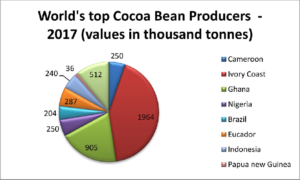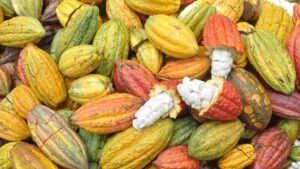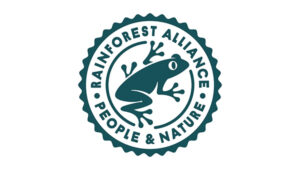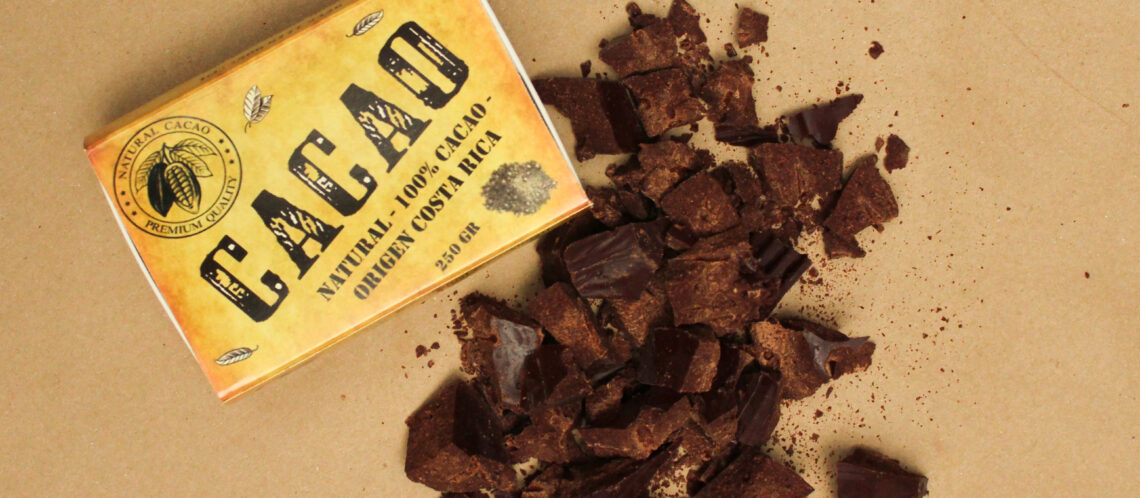Ah, cocoa! The main ingredient in chocolate, a product easily found in any supermarket around the world, a pillar of the modern food industry… Do you really think you know everything about this little bean? Coming from a long traditional history, we often think we know everything about this sweet treat… wrongly! Let us then present you with 6 new facts about chocolate!
Which are the largest cocoa producing countries today?
Although cocoa was discovered in South America, the largest producers are mainly located in West Africa. As the leading producer, Ivory Coast alone accounts for between 30 and 40% of the world’s cocoa production. This African country benefits from ideal climatic conditions for growing cocoa, which obviously makes it a key player on the international market. Just after Ivory Coast, Ghana stands out as the second largest cocoa producer in the world. Together, these two countries represent a significant share of production at the global level. Due to their dominance in cocoa production, Ivory Coast and Ghana are essential for the supply chains of major chocolate brands.
In addition to West Africa, other countries in Latin America and Asia also produce cocoa, although in smaller quantities. Brazil and Ecuador, for example, are among the largest producers in Latin America, recognized for the quality of their cocoa, especially the “Arriba” type cocoa. Other countries such as Peru are also notable producers, offering specific varieties that are sought after in international markets. On the Asian side, Indonesia is among the cocoa producing countries, with increasing production in recent years, thus contributing to the diversity of the global supply. The diversity of cocoa origins enriches the market and allows producers to explore varied and sustainable agricultural practices to meet the challenges of the sector.
And what about Costa Rica?
Costa Rica, a much smaller producer, still plays an interesting role in cocoa bean production. This Central American country focuses on producing high-quality cocoa, prized for its distinctive taste and aroma profile. Through sustainable farming practices and a commitment to environmental conservation, Costa Rica has successfully positioned its cocoa as a niche product internationally, attracting the attention of artisanal chocolatiers and quality-conscious consumers. Additionally, the government and local organizations support producers with training and market access programs, fostering sustainability and innovation in the sector. Costa Rica is an inspiring example of how targeted initiatives can enrich the cocoa industry while supporting local farming communities.

Cocoa producers: Africa, America and Asia in the lead
Which countries, on the other hand, are the biggest consumers of chocolate?
On the other side, we have the cocoa importing countries. These also play a key role in world trade since they supply the chocolate and derivative products markets. Unsurprisingly, as with many food raw materials, we find a duality between the countries of the South, producing the material, and the countries of the North consuming it. It is therefore Europe, North America and Australia that are to be considered this time.
Among the world’s largest consumers of chocolate, France, Switzerland, Germany and Belgium stand out as major destinations for cocoa. Belgium, for example, is famous for its world-renowned artisanal chocolate making, while Germany and Switzerland rank among the top countries in terms of the volume of chocolate consumed. These nations import significant quantities of cocoa beans, mainly from Ivory Coast and Ghana, which together account for around 60% of global production as we have seen above.
Other Western countries such as the United States and the United Kingdom are also among the major importers, using cocoa to produce a wide range of chocolate products, from chocolate bars to candies and pastries. In addition, the Netherlands is also a notable player in the cocoa sector, often serving as a processing hub before distribution to other European markets.
Global cocoa consumption is steadily increasing with trends showing a growing preference for dark chocolate, perceived as healthier, and for organic and fair trade chocolate. The latter point provides an incentive for importing countries to source high-quality cocoa while emphasizing sustainable practices. The Swiss chocolate industry has also been a pioneer in adopting sustainable and ethical practices. Many brands are committed to sourcing cocoa from sustainable sources and participating in initiatives such as Fair Trade and the Rainforest Alliance. This reflects a growing awareness of sustainability and ethics in the cocoa supply chain, values that are increasingly valued by consumers.

Europe: the world’s largest cocoa importer
Cocoa wasn’t always just a food
Cocoa has played a much more significant role in the history of Latin America than just a food! Not only was it valued for its nutritional properties and taste, but it also occupied an important place in the economic and religious sphere of several pre-Columbian civilizations, particularly the Aztecs and Mayans.
First of all, before the arrival of the Europeans, cocoa beans were used as currency by Mesoamerican peoples. They were exchanged to obtain goods and services, and their value was widely recognized. For example, in Aztec society, one could buy food or pay for services in cocoa, each bean having a specific economic value. The Spanish themselves adopted this practice after their conquest, using it in particular to pay indigenous workers. A striking example is that a day’s work could be paid with 25 cocoa beans in some places like Acatlán. This monetary system continued to be used until the 19th century in some regions of Central America. We discussed this topic in a previous article, feel free to go take a look! 😉
In addition, cocoa also had a strong spiritual and religious dimension. Indigenous peoples like the Mayans and Aztecs considered cocoa to be a divine gift. According to Aztec mythology, the god Quetzalcoatl brought cocoa beans from paradise to offer them to humanity. The Mayans used cocoa in religious ceremonies, including funeral rituals and offerings to the gods. The bitter and frothy chocolate drink was reserved for the elite, such as nobles and priests, and played a role in rituals, sometimes symbolizing the blood of sacrificial victims.
Apart from its economic and religious use, cocoa was seen as a symbol of power and prestige. The Aztecs and Mayans associated it with vitality and health. Its consumption in its liquid form was a privilege reserved for the ruling class and warriors, thus reinforcing its social importance.
From cocoa bean to chocolate…
The transformation of cocoa beans into chocolate bars is done in several stages in order to obtain the texture and taste that we know. The first phase consists of harvesting and fermenting the beans. After harvesting the cocoa pods, that is to say the harvest of the large fruit on the cocoa tree, the one that produces between 30 and 50 beans, the latter are extracted and fermented for several days. This fermentation is essential to develop the aromas of the cocoa and remove some of the natural bitterness. Once fermented, the beans are dried in the sun for about a week.

The bean, the first step in the creation of chocolate
The second step is roasting and grinding. The dried beans are roasted to intensify their flavor. This roasting can vary depending on the desired flavor profile. Next, the beans are ground into a paste called “cocoa liquor.” This paste contains cocoa butter and cocoa solids. At this point, it is possible to separate the cocoa butter from the solids if necessary for specific products, such as white chocolate that uses only the butter.
Finally, the cocoa liquor goes through the process of conching and tempering to create the bars. Conching involves mixing and refining the cocoa liquor for several hours, sometimes days, to improve its texture and reduce acidity. After this step, the chocolate is tempered: it is heated, cooled, and then reheated in a precise manner to stabilize the cocoa butter crystals. This results in a smooth, shiny, and meltable chocolate. Once this step is complete, the chocolate is molded into bars and cooled before being packaged and marketed.
Would you like more details, or to know how we do it at Casa del Cacao? Sign up for our workshops, and learn how to make your own chocolate! 😍
Cocoa: between social issues and economic realities
Employment stake
The chocolate industry represents a crucial source of employment for many rural communities in Africa and Latin America. However, the quality of these jobs raises major concerns. Many cocoa workers, whether they are producers or employees on plantations, live in precarious conditions, with wages often below the poverty line. Child labour is also a worrying reality, particularly in West Africa, where many children are forced to work in cocoa fields rather than attend school. To improve the situation, it is essential that chocolate companies implement ethical sourcing practices, ensuring fair wages and decent working conditions. In addition, developing local initiatives to create sustainable jobs could contribute to improving the living conditions of rural populations.
Agriculture stake
Cocoa agriculture faces many challenges, including the impacts of climate change, deforestation and unsustainable agricultural practices. In Africa and Latin America, smallholder farmers, who represent the majority of cocoa producers, are often on the front lines of environmental impacts, while being vulnerable to fluctuations in market prices. To ensure the sustainability of this essential crop, it is imperative to promote sustainable agricultural practices, such as agroforestry, which not only preserve the environment but also improve the resilience of farms to climate hazards. In addition, access to training and resources for farmers can play a key role in improving cocoa yields and quality, which is crucial for competitiveness in the global market.

The cocoa pod: a fruit with strong social implications
Women’s place in society
In cocoa-producing regions of Africa and Latin America, women’s place in society is often marginalized, despite their essential role in the cocoa value chain. Women are often responsible for growing and harvesting cocoa, but they generally lack access to the resources, training and development opportunities that would allow them to maximize their potential. Their involvement is often undervalued, and they have little decision-making power, even in matters that directly concern them. Encouraging women’s empowerment through training programs and access to finance could transform not only their personal situations, but also those of their communities. Gender equality in the cocoa sector could also improve the productivity and sustainability of farms. We covered this topic in more detail in our article on ACOMUITA, if you’re interested! 😄
Overall, the cocoa and chocolate business is deeply rooted in complex social issues that affect local populations in Africa and Latin America. Improving the livelihoods of cocoa farmers requires a holistic approach, including women’s empowerment, decent job creation, and the promotion of sustainable agricultural practices. A sincere commitment to social and environmental responsibility by companies and governments can contribute to a more equitable and sustainable future for all stakeholders.
Cocoa as a factor of development
Fair Trade Initiative
The fair trade movement, represented by organizations such as Fairtrade International, has established standards that guarantee cocoa farmers a minimum price for their products. These standards also include premiums for community projects, allowing farmers to invest in education, health and infrastructure. For example, cocoa farmers in Ghana and Ivory Coast have benefited from these initiatives, which aim to improve their living conditions.
Rainforest Alliance Certification Projects
Rainforest Alliance certification encourages sustainable cocoa farming practices, promoting biodiversity and forest protection. Certified farmers benefit from training on sustainable farming practices and access to premium markets. Countries such as Colombia and Peru have seen initiatives under this certification that help farmers improve the quality of their cocoa while protecting the environment.

Rainforest Alliance: a certification that encourages sustainable development
Ghana Government Support Program
The Ghanaian government has several initiatives to support cocoa farmers, including the Cocoa Board, which helps regulate production and set stable prices. Training programs are also offered to improve farming techniques and productivity. In 2020, the government launched a program to compensate farmers who adopt sustainable practices, aimed at building farm resilience to climate change.
Microfinance Projects
Organizations such as Root Capital and Kiva provide loans and financial resources to cocoa farmer cooperatives in Africa and Latin America. These microfinance projects provide farmers with access to capital to invest in their production, purchase equipment, and improve their infrastructure. For example, cooperatives in Peru have used these loans to improve their production capacity and access international markets.
Sustainable Cocoa Coalition
The Cocoa Sustainability Partnership brings together public and private actors to promote sustainable practices in cocoa production. This coalition, which includes major chocolate brands, is committed to investing in projects that improve the living conditions of producers and encourage sustainable agricultural practices. Initiatives in Ghana and Ivory Coast have been launched to train farmers and help them access sustainable certifications.
Want even more information about cocoa? Come visit us directly in our store to talk about it. We look forward to meeting you! 😇
